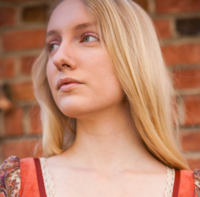Comments (2)

Words to live by from Jeannette : 'If you wanted to sit down, you should’ve thought of that before you got married, Hendrik!'

We do our best to use images that are open source. If you feel we have used an image of yours inappropriately please let us know and we will fix it.
Our writing can be punchy but we do our level best to ensure the material is accurate. If you believe we have made a mistake, please let us know.
If you are planning to see an artwork, please keep in mind that while the art we cover is held in permanent collections, pieces are sometimes removed from display for renovation or traveling exhibitions.

Editor
Flip through any bridal inspo magazine and you’re sure to find hundreds of ideas for a “rustic chic” wedding, from barn venues with dirt floors and exposed beams, to chalkboard signs and burlap placemats. But if you’re still looking for that perfect bucolic touch, look no further than Pieter Brueghel’s Peasant Wedding for some fresh ideas from the 1500s. Why not ditch the mason jars for some earthenware vessels to emphasize the peasant nature of the party? Or maybe upcycle a door by taking it off its hinges and using it as a tray. Instead of benches or folding chairs, provide a barrel to seat your most distinguished guest, like your landlord. Maybe even include a floral arrangement of two sheaves of corn and a rake fixed to a wall of straw as a reminder of the harvest and the toil man must suffer to grow crops as punishment for sin.
Okay, so maybe back in Brueghel’s day it wasn’t “rustic chic.” It was just poverty, and it was basically a one way ticket to misery and being scorned as more likely to fall prey to the seven deadly sins. But that didn’t stop wealthy urbanites from flocking to the country for peasant festivals, where they enjoyed slumming it (and not just because the beer tax was cheaper in the country), but because by dressing in commoners’ clothes, they would also be free from their own social restraints. Brueghel, an urbanite himself, used to crash weddings like this one with his bestie Hans Franckert, dressed in peasant garb and pretending to be family members of the bride or groom. Some people even think the well-dressed man on the barrel conversing with the monk is not the landlord, but a portrait of Pieter himself.
Brueghel’s wedding crashing hijinks gave him an accurate picture of peasant wedding customs, which he in turn shows us in this painting. The bride sits before a cloth of honor, her hair down as a symbol of her virginity. Their clothes are accurately depicted Kempish costumes. The food they are eating is “pottagie van rijs,” a rice pudding also seen in Netherlandish Proverbs that is composed of rice, milk, sugar, butter, ginger, cinnamon, and saffron, according to an Antwerp cookbook from 1514. Unlike his contemporaries, Brueghel even permits the peasants some degree of dignity. They are not drunk, gluttonous, or lustful, but well-behaved, digging into their meal with gusto and just a hint of solemnity. A few humorous touches are sprinkled in -- the boy licking his finger, and the bagpiper staring so hungrily at the porridge you can hear his stomach growl, exemplifying the Netherlandish proverb “If the bagpipe isn’t full, it doesn’t screech.” Just the fact that they are painted eating is unique. Most fancy schmancy people never would’ve dreamed of being depicted while eating, AKA indulging their base, animal appetites. Yes, it’s ok for food to be depicted on the table, but certainly not on its way to one’s lips! Heavens, what would people think? That...that you *whisper* have a body? Oh, it’s too terrible for words!
This painting has been endlessly subjected to interpretation. Maybe it’s true that the absence of a clearly marked groom means the painting is about the abandonment of the Church by Christ, but maybe it was also just Flemish custom for the groom not to sit at the wedding table. (If you wanted to sit down, you should’ve thought of that before you got married, Hendrik!) Maybe the painting is an allegory for the biblical Wedding at Cana. Or even the Last Judgment. It’s true that Brueghel’s paintings are packed with symbols and motifs, but could it be possible he was recording peasant festivities because he thought they were *gasp* worth recording, in the same way that village winter life was worth noting in Hunters in the Snow? Perhaps this painting is less didactic and more intended to inspire a benign and thoughtful idea of peasants in the viewer (who, let’s be honest, was probably some wealthy landowner who could use it). Perhaps, by painting the particulars of Flemish wedding customs, Brueghel actually celebrates the peasant “Everyman” and thereby reflects on universally shared human experience. Like eating.
Featured Content
The Peasant Wedding is a 1567 genre painting by the Dutch and Flemish Renaissance painter and printmaker Pieter Bruegel the Elder, one of his many depicting peasant life. It is now in the Kunsthistorisches Museum, Vienna. Pieter Bruegel the Elder enjoyed painting peasants and different aspects of their lives in so many of his paintings that he has been called Peasant-Bruegel, but he was an intellectual, and many of his paintings have a symbolic meaning as well as a moral aspect.
Check out the full Wikipedia article about The Peasant Wedding

Words to live by from Jeannette : 'If you wanted to sit down, you should’ve thought of that before you got married, Hendrik!'
The whole composition of the scene is large, many figures, rich in details, there is no obvious central figure in the painting, it seems to be randomly absorbed into the picture, so that people have a natural, friendly strong impression。